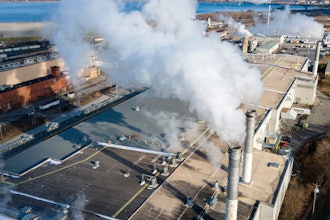Chemicals and Machinery Are Expected to See Big Export Gains as the U.S. Becomes Increasingly Cost-Competitive
CHICAGO, August 20, 2013 — Some of the biggest gains in U.S. exports due to a widening U.S. production-cost advantage over leading Western European nations and Japan are likely to be seen in chemicals, machinery, and transportation equipment, according to a new report by The Boston Consulting Group (BCG). The report, titled Behind the American Export Surge: The U.S. as One of the Developed World’s Lowest-Cost Manufacturers, is being released today.
The report updates and elaborates on BCG research released last September, in which the firm predicted that higher exports as well as reshoring from China and elsewhere could add 2.5 million to 5 million manufacturing and related service jobs by the end of this decade. That, in turn, could reduce the unemployment rate, currently 7.4 percent, by as much as two to three percentage points. The report's projections are based on an analysis of labor, energy, and logistics cost trends in the U.S., Germany, France, Italy, the U.K., and Japan, all of which are major exporters of manufactured goods.
“Over the past 40 years, factory jobs of all kinds have migrated from high-cost to low-cost countries,” said Harold L. Sirkin, a BCG senior partner and a coauthor of the report. “Now, as the economics of global manufacturing changes, the pendulum is finally starting to swing back. In the years ahead, it could be America’s turn to be on the receiving end of production shifts, as more companies use the U.S. as a low-cost export platform.”
Labor costs will be especially important sources of competitive advantage in U.S. manufacturing. Adjusted for productivity, U.S. labor costs are projected to be 15 to 35 percent lower than those of Western Europe and Japan by 2015 for many products. Only a decade ago, average productivity-adjusted factory labor costs were around 17 percent lower in the U.S. than in Europe, and only 3 percent lower in the U.S. than in Japan.
Cheap energy will also boost U.S. competitiveness in several industries. By 2015, prices for natural gas are projected to be 60 to 70 percent lower, and electricity is projected to be 40 to 70 percent cheaper in the U.S. than in Europe and Japan.
Compared with other developed economies, the U.S. is particularly well positioned to increase exports in seven industrial categories, according to the report. In addition to chemicals, machinery, and transportation equipment, they are petroleum and coal products, computer and electronic products, electrical equipment and appliances, and primary metals. These seven sectors account for roughly three-quarters of total global exports. The job gains would come directly through added factory work and indirectly through supporting services, such as construction, transportation, and retail.
“It will take several more years for the full impact of improved U.S. competitiveness to translate into significantly more jobs and higher industrial output,” said Michael Zinser, a BCG partner who leads the firm’s manufacturing practice in the Americas and a coauthor of the report. “But we already are seeing early evidence. Foreign companies such as Toyota, Airbus, Yamaha, Siemens, and Rolls-Royce are starting to move more production to the U.S. for export around the world.”
Some of the report’s key findings:
Chemicals. By 2015, the U.S. is projected to gain $7 billion to $12 billion in chemical exports from Western Europe and Japan. “The low cost of U.S.-produced natural gas, an important feedstock in chemicals, will be the big reason,” explained Justin Rose, a BCG partner and coauthor. Production costs in Germany, where natural gas used in chemical manufacturing will be more than three and a half times more expensive, are projected to be 29 percent higher than in the U.S. in 2015. Costs are projected to be 16 percent higher in China, for example, and 28 percent higher in France.
Machinery. BCG projects that by 2015, the U.S. will gain $3 billion to $12 billion from Western Europe and Japan in exports of machinery, a broad category that includes everything from construction and industrial machinery to engines and air conditioners. The U.S. will have a manufacturing cost advantage in machinery of around 7 percent over Japan, 14 percent over Germany and France, and 15 percent over Italy. Labor costs will be the big differentiator.
Production gains will come in several forms. In some cases, companies will increasingly use the U.S. as a low-cost export base for the rest of the world. In other cases, U.S. production will displace imports as both U.S. and foreign companies relocate the manufacturing of goods sold in the U.S. that otherwise would have been made offshore.
Transportation Equipment. BCG projects that by 2015, the U.S. will gain $3 billion to $9 billion in exports of transportation goods such as cars, trucks, buses, and aircraft from Western Europe and Japan. The U.S. will have an approximate 6 percent average cost advantage over Japan and an 11 percent advantage over Germany in this industrial category, primarily because of lower productivity-adjusted labor costs. China will still have an estimated average production-cost advantage of around 6 percent in 2015 for transportation equipment, but it will likely make more economic sense for such products to be made in the U.S. if they are consumed in the U.S. when shipping and other costs are accounted for.
“Companies should of course continue to maintain a diversified manufacturing footprint around the world,” said Sirkin, who along with Zinser and Rose is coauthor of The U.S. Manufacturing Renaissance: How Shifting Global Economics Are Creating an American Comeback (Knowledge@Wharton, 2012). “But at the same time, shifting cost dynamics suggest that more companies should give immediate attention to considering the U.S. as a manufacturing option for global markets.”
Behind the American Export Surge is the third major report in BCG’s ongoing Made in America, Again series, produced by its Operations and Global Advantage practices. The first two reports, from August 2011 and March 2012, explained how China's once overwhelming production-cost advantage over the U.S. is rapidly eroding because of higher wages and other factors—and how these trends are likely to boost U.S. manufacturing in specific industries.
A copy of Behind the American Export Surge can be downloaded at www.bcgperspectives.com.
About bcgperspectives.com
Bcgperspectives.com features the latest thinking from BCG experts as well as from CEOs, academics, and other leaders. It covers issues at the top of senior management’s agenda. It also provides unprecedented access to BCG’s extensive archive of thought leadership stretching back 50 years to the days of Bruce Henderson, the firm’s founder and one of the architects of modern management consulting.
More from MBTMag.com
Hyundai Labor Union To Strike For 4 Hours
Creditors File Objections To Detroit Bankruptcy
Smithfield Sets Sept. Shareholder Vote On Takeover






















